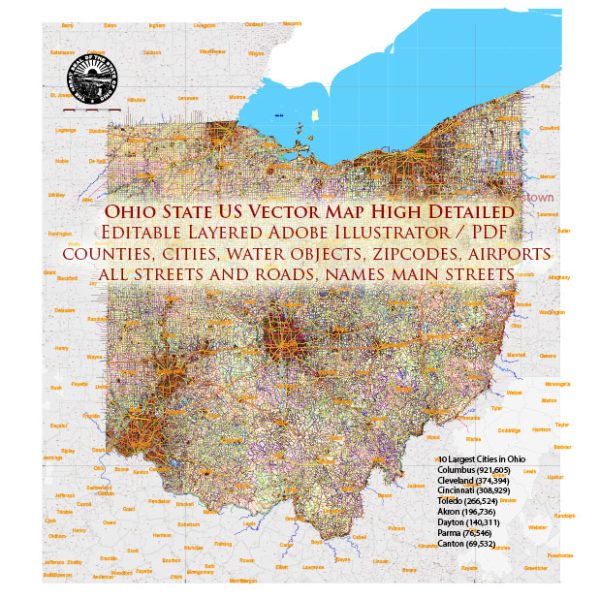General description of water and air transportation in Ohio, USA.
Water Transportation: Ohio has an extensive network of rivers, including the Ohio River, the Great Miami River, and the Muskingum River, which historically played a crucial role in transportation. The Ohio River, in particular, has been a significant waterway for commerce and trade. Cities such as Cincinnati, Marietta, and Portsmouth are located along the Ohio River and have historically been important ports.
The Port of Cleveland, situated on Lake Erie, is a major hub for maritime activities in Ohio. It handles bulk cargo, containerized cargo, and general cargo, contributing to the economic development of the region. Lake Erie also supports ferry services and recreational boating.
Air Transportation: Ohio is served by several major airports that contribute to its air transportation infrastructure. The main airports include:
- Cleveland Hopkins International Airport (CLE): Located in Cleveland, it is a major hub for domestic and international flights.
- Port Columbus International Airport (CMH): Serving the capital city, Columbus, this airport is a key transportation hub in the region.
- Cincinnati/Northern Kentucky International Airport (CVG): Situated on the border between Ohio and Kentucky, this airport serves the Cincinnati metropolitan area.
- Dayton International Airport (DAY): Serving the Dayton area, it provides both domestic and limited international flights.
These airports play a crucial role in connecting Ohio to various destinations worldwide, facilitating business travel, tourism, and the movement of goods.
Additionally, Ohio is home to several smaller regional airports that support general aviation and private aircraft. These airports contribute to the overall accessibility of the state.
For the most up-to-date and detailed information, it’s recommended to check with official sources, such as the Ohio Department of Transportation or the relevant port and airport authorities.


 Author: Kirill Shrayber, Ph.D.
Author: Kirill Shrayber, Ph.D.